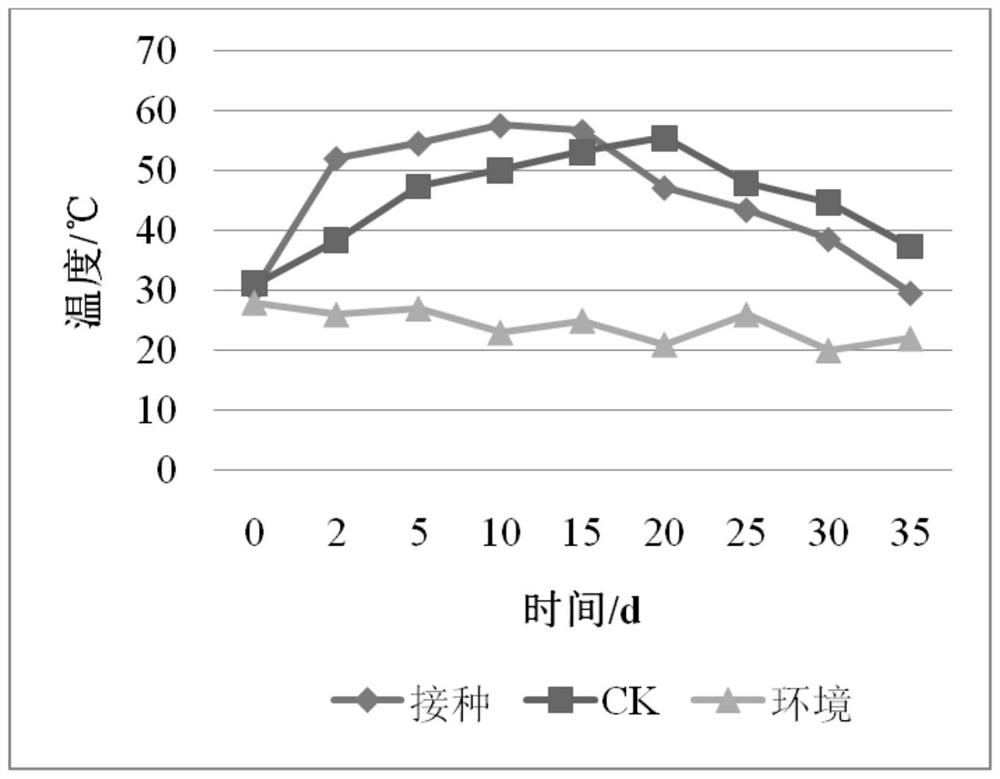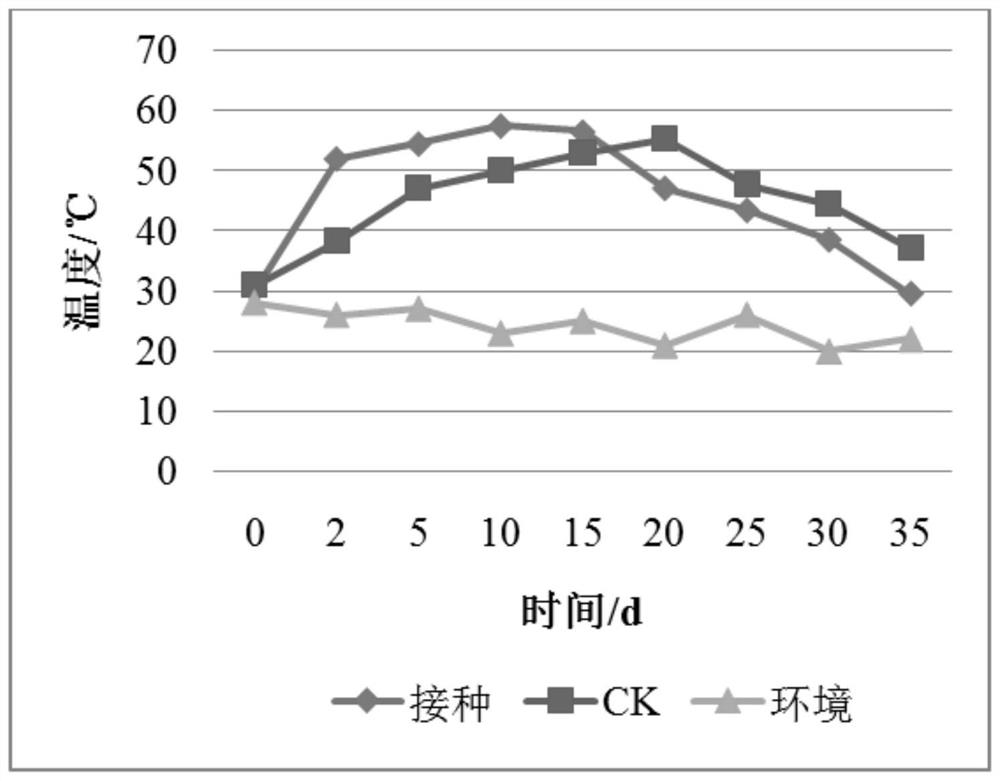Composite microbial inoculum and application thereof to compost fermentation of alpinia speciosa K.schum. branches and leaves
A compound bacterial agent, branch and leaf technology, applied in the field of microorganisms, can solve the problems of slow heating of organic fertilizers, reduced land utilization, and inability to carry out composting and fermentation smoothly.
- Summary
- Abstract
- Description
- Claims
- Application Information
AI Technical Summary
Benefits of technology
Problems solved by technology
Method used
Image
Examples
Embodiment 1
[0016] The screening of embodiment 1 composite bacterial agent
[0017] Preliminary screening: Weigh 5g of soil samples from the bottom soil where the branches and leaves of Alpinia japonicus have been piled up for a long time, put them in 100mL sterile water, seal the top with aluminum foil, place them in a shaker at 30°C for 24 hours, and obtain the extract. Draw 10mL of the extract into 100mL PCS liquid medium (peptone 5g / L, sodium chloride 5g / L, calcium carbonate 2g / L, yeast powder 1g / L), then add 2.5g of Alpinia birch branches and leaves, put in the bottle A filter paper strip with a width of about 1cm is placed in a 50°C incubator for static cultivation, and the filter paper strip can be decomposed, indicating that this group of bacterial agents can decompose the toxic substances contained in the branches and leaves of Alpinia japonica, thereby exerting the function of cellulose decomposition, passing through 50 times Through continuous subculture, the treatments wi
Embodiment 2
[0025] Example 2 Analysis of the detoxification effect of the compound bacterial agent for the detoxification of the branches and leaves of Alpinia japonicus
[0026] The selected weight ratio is 30% of halophilic bacteria, 15% of micromonas soil, 15% of thermosporum, 15% of Clostridium butyricum, 10% of Methylococcus capsulatus, 5% of acetic acid oxidizing bacteria, ethanol producing 5% protein-eating bacteria and 5% ruminococcus composite bacterial agent, cultured statically at 50°C for 4 days in PCS liquid medium until vigorous growth period. Accurately weigh 5.000g of crushed fresh Alpinia japonica branches and leaves, place them in 100mL sterile PCS liquid medium with a 1cm wide filter paper strip, inoculate 10mL of the above-mentioned compound bacterial agent cultivated to the vigorous stage, and inoculate 10mL sterile PCS The liquid medium was used as a control, and cultured at 50°C for 7 days until the filter paper strips were completely decomposed. For each treatment, t
Embodiment 3
[0031] Example 3 Analysis of the detoxification effect of the compound bacterial agent for the detoxification of the branches and leaves of Alpinia japonicus
[0032] The selected weight ratio is 30% of halophilic bacteria, 15% of micromonas soil, 15% of thermosporum, 15% of Clostridium butyricum, 10% of Methylococcus capsulatus, 5% of acetic acid oxidizing bacteria, ethanol producing 5% of protein-eating bacteria and 5% of Ruminococcus, the halophilic bacteria adopts the halophilic bacteria numbered DSM 18853, and the soil micromonas adopts the soil micromonas numbered CGMCC1.10919 Bacteria, the thermophilic spore-forming bacterium adopts the thermophilic spore-forming bacterium numbered DSM 19022, the Clostridium butyricum uses the Clostridium butyricum with the number ATCC 19398, and the capsular methyloccus adopts the number ATCC 19069 Methylococcus capsula, the acetic acid oxidizing bacteria adopts the acetic acid oxidizing bacteria numbered DSM 21804, the ethanol-producing
PUM
 Login to view more
Login to view more Abstract
Description
Claims
Application Information
 Login to view more
Login to view more - R&D Engineer
- R&D Manager
- IP Professional
- Industry Leading Data Capabilities
- Powerful AI technology
- Patent DNA Extraction
Browse by: Latest US Patents, China's latest patents, Technical Efficacy Thesaurus, Application Domain, Technology Topic.
© 2024 PatSnap. All rights reserved.Legal|Privacy policy|Modern Slavery Act Transparency Statement|Sitemap



